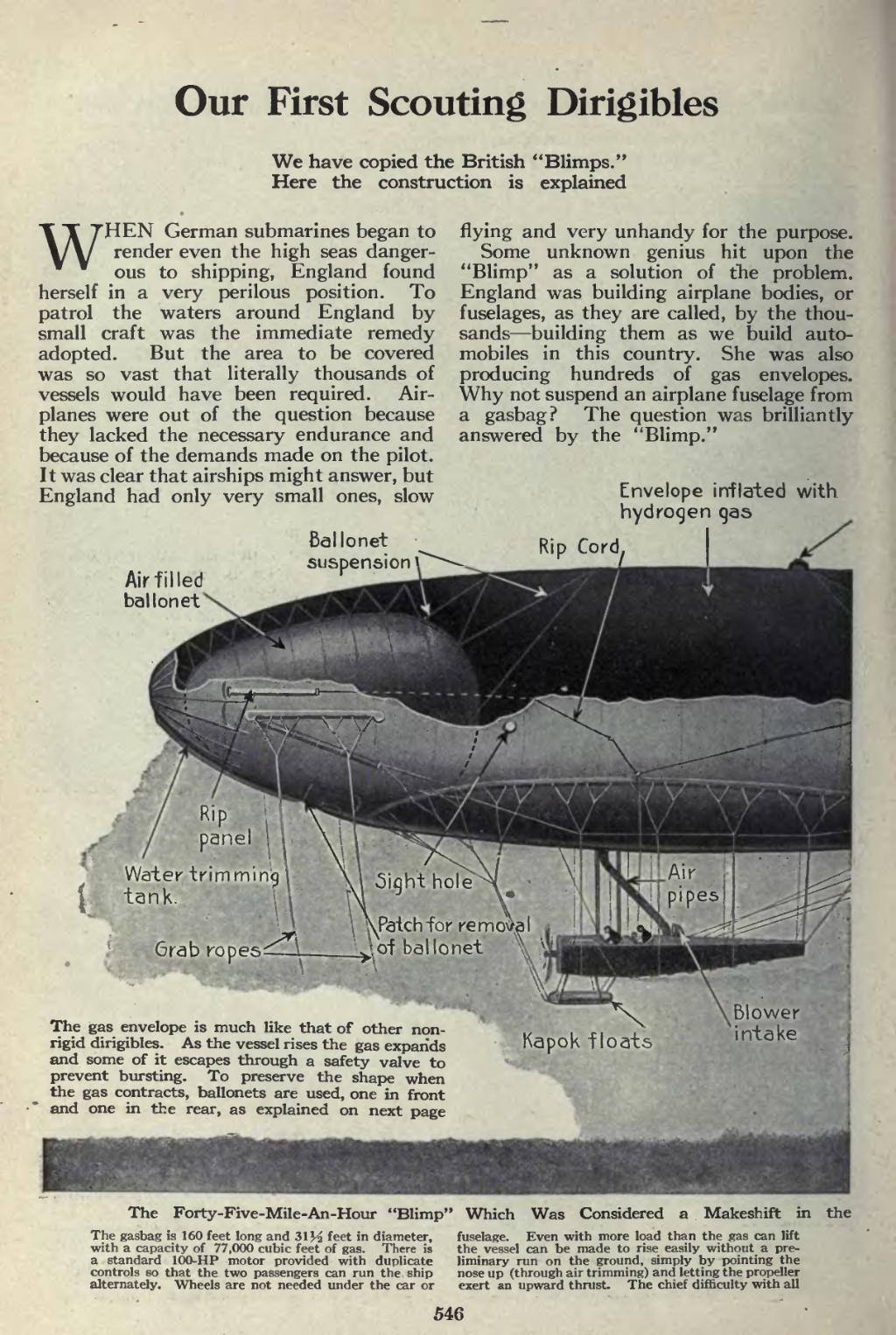Our First Scouting Dirigibles
��We have copied the British "Blimps." Here the construction is explained
��WHEN German submarines began to render even the high seas danger- ous to shipping, England found herself in a very perilous position. To patrol the waters around England by small craft was the immediate remedy adopted. But the area to be covered was so vast that literally thousands of vessels would have been required. Air- planes were out of the question because they lacked the necessary endurance and because of the demands made on the pilot. It was clear that airships might answer, but England had only very small ones, slow
��flying and very unhandy for the purpose. Some unknown genius hit upon the "Blimp" as a solution of the problem. England was building airplane bodies, or fuselages, as they are called, by the thou- sands — building them as we build auto- mobiles in this country. She was also producing hundreds of gas envelopes. Why not suspend an airplane fuselage from a gasbag? The question was brilliantly answered by the "Blimp."
��Envelope inflated with hydrogen gas
��Air filled balloneV
��Ballonet suspension
���Water trimming 1 tank. \ \
��The gas envelope is much like that of other non- rigid dirigibles. As the vessel rises the gas expands and some of it escapes through a safety valve to prevent bursting. To preserve the shape when the gas contracts, ballonets are used, one in front and one in the rear, as explained on next page
��Kapok floats
��Blower intake
��The Forty-Five-Mile-An-Hour "Blimp" Which Was Considered a Makeshift in the
��The gasbag is 160 feet long and 31 H feet in diameter, with a capacity of 77,000 cubic feet of gas. There is a standard 100-HP motor provided with duplicate controls so that the two passengers can run the ship alternately. Wheels are not needed under the car or
��fuselage. Even with more load than the gas can lift the vessel can be made to rise easily without a pre- liminary run on the ground, simply by pointing the nose up (through air trimming) and letting the propeller exert an upward thrust. The chief difficulty with all
��546
�� �
